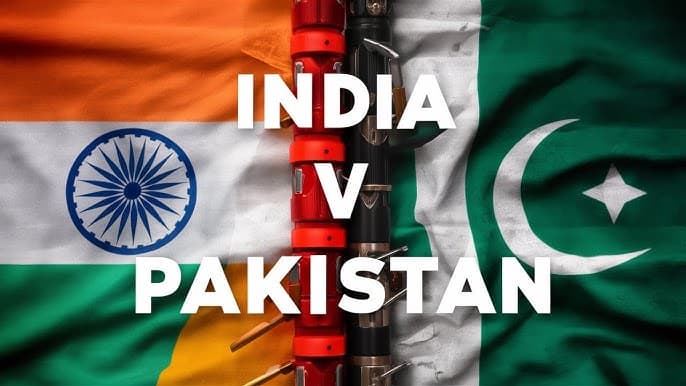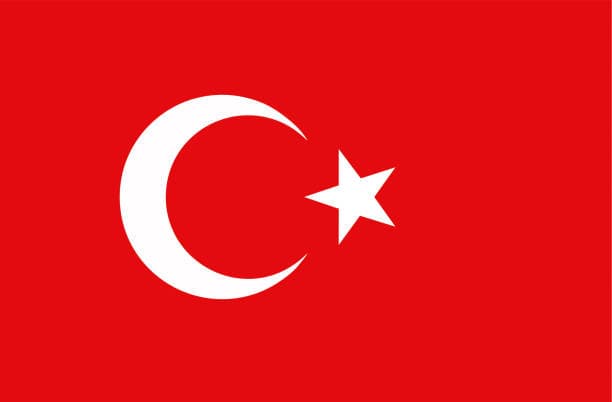
Guide to YouTube Monetization in Pakistan: Opportunities and Challenges
Summary
YouTube monetization in Pakistan represents a burgeoning opportunity for content creators in a country experiencing rapid digital growth. As of 2024, the country has seen a significant increase in internet penetration, reaching 45.7 percent of the population, which has helped foster a dynamic environment for digital content creators [1]. YouTube, as a platform, offers Pakistani creators the potential to reach global audiences and generate income through various monetization avenues, such as ad revenue, channel memberships, and merchandise sales. This monetization has not only empowered individual creators but has also contributed to the broader digital economy, with a notable rise in creators earning substantial incomes [2][3].
Despite the promising prospects, monetization on YouTube in Pakistan is fraught with challenges. Pakistani creators face lower CPM rates compared to Western countries, limited brand partnerships, and occasional internet disruptions, which collectively hinder their earning potential [4][5]. Additionally, content restrictions and regulatory hurdles, including compliance with national laws and potential censorship, pose further obstacles [6]. The legacy of the 2012 YouTube ban in Pakistan continues to loom as a potential risk for creators, highlighting the fragile nature of the digital landscape [7].
The economic impact of YouTube monetization in Pakistan extends beyond individual creators. It contributes significantly to the Information and Communication Technology (ICT) sector, with the potential to boost GDP, create jobs, and reduce unemployment [8]. However, recent challenges, such as internet disruptions due to increased surveillance measures, have posed risks to this growth trajectory [9]. The country's vibrant technology sector, supported by a growing number of IT graduates and tech startups, remains a fertile ground for digital innovation, offering promise for future growth [10].
In response to these challenges, a supportive community of content creators has emerged in Pakistan, fostering collaboration and resource-sharing among YouTubers. Initiatives such as the Creator's Floor and networks like BRADRI offer essential support, providing production facilities and professional advice to help creators navigate the complex monetization landscape [11][12]. As these networks continue to grow, they hold the potential to further strengthen the digital content ecosystem in Pakistan, making YouTube a viable and sustainable platform for creators.
Internet Infrastructure in Pakistan
The internet infrastructure in Pakistan has experienced significant growth in recent years, reflecting a dynamic landscape marked by both challenges and opportunities. As of January 2024, there were 111.0 million internet users in Pakistan, with an internet penetration rate of 45.7 percent of the total population[1]. This marks a substantial increase from January 2023, when there were 87.35 million internet users and a penetration rate of 36.7 percent[13]. The increase in internet users by 24 million between 2023 and 2024 demonstrates a growth rate of 27.1 percent, indicating a rapid expansion of internet access in the country[1].
Broadband services have played a crucial role in enhancing internet connectivity. By September 2023, the number of broadband subscribers in Pakistan had reached 130.1 million, exhibiting an exceptional growth rate of 110 percent over the last five years[14]. The broadband penetration rate, which includes both mobile and fixed connections, surged to 54.5 percent, up from 29 percent in 2018[14]. According to the Pakistan Telecommunication Authority (PTA), as of March 2023, the country had 128 million broadband customers, with a penetration rate of 54.13 percent[15].
Several factors have contributed to this growth in internet usage, including enhanced smartphone penetration, more accessible data rates, and improved telecommunication infrastructure[15]. Despite this progress, the internet infrastructure remains fragile, as highlighted by recent disruptions that exposed vulnerabilities in the digital network[16]. Addressing these challenges is essential to support the increasing number of internet users and to ensure a robust and reliable digital environment for content creators and other internet-dependent sectors in Pakistan.
Requirements for Monetization
Monetizing YouTube content in Pakistan involves meeting specific eligibility criteria and navigating unique challenges faced by creators in the region. To qualify for the YouTube Partner Program (YPP), a creator's channel must adhere to YouTube's guidelines and meet certain thresholds, such as a specified number of subscribers and watch hours[17][18]. Previously, these requirements included having at least 1,000 subscribers and 4,000 watch hours in the past year, or 3 million Shorts views in the last 90 days[19].
YouTube has recently adjusted its policies to lower the barriers for monetization access, allowing more creators to qualify for YPP and offering additional monetization tools like Super Thanks, Super Chat, and Super Stickers[20]. Creators meeting the new thresholds can also benefit from promotional tools and YouTube Shopping to enhance their revenue streams[20]. However, even if a channel meets these eligibility criteria, not all videos may qualify for ads, as they must comply with Advertiser-Friendly Content Guidelines[21].
Additionally, content creators in Pakistan face challenges such as lower CPM rates compared to Western countries and limited brand partnerships, which affect overall monetization potential[4]. Despite these challenges, YouTube continues to offer multiple monetization streams, making it a lucrative platform for dedicated creators willing to adhere to the evolving requirements[17].
Monetization Methods
YouTube content creators in Pakistan can explore various monetization methods to generate revenue from their videos. A primary method is through the YouTube Partner Program (YPP), which allows creators to earn money via ad revenue, channel memberships, Super Chat, Super Stickers, and Super Thanks[22]. Once creators meet the eligibility requirements, they can apply to the YPP to access these monetization features[23][22].
Ad revenue remains a crucial component of YouTube earnings, determined by CPM (Cost Per Mille) rates, which can vary significantly based on audience demographics and content niche[5]. However, Pakistani YouTubers often face challenges in monetization due to lower CPM rates compared to Western countries and limited brand partnerships[4][5]. This makes it imperative for creators to diversify their income streams, such as exploring merchandise sales or collaborating with brands for sponsorships[24][25].
Additionally, YouTube is continually updating its policies to lower the requirements for monetization, making it more accessible for creators. For example, in 2023, YouTube announced a reduction in the eligibility criteria, allowing more creators to participate in the YPP and take advantage of monetization tools[26]. Despite these opportunities, content creators in Pakistan must navigate content restrictions and censorship, which can also affect their monetization potential[4].
For creators targeting international audiences, selecting reliable banking partners for seamless AdSense payments is crucial, as this can impact the efficiency of receiving earnings from YouTube[27]. Understanding these various monetization methods and strategically leveraging them can enhance the potential for financial success on the platform.
Challenges and Issues
Pakistani YouTubers face several challenges in their quest for monetization on the platform. One significant hurdle is monetization issues that stem from limited brand partnerships and lower CPM rates compared to Western countries[4]. This disparity makes it difficult for content creators in Pakistan to earn as much revenue as their counterparts in more developed markets.
Another challenge is the limited access to high-end equipment and fast internet, which many aspiring YouTubers in Pakistan struggle with[24]. These resource constraints can hinder the production quality of content, thereby affecting the creators' ability to attract and retain audiences.
Monetization opportunities are further restricted by content restrictions and censorship, which can hinder creators from expressing themselves freely and limit the range of topics they can cover[4]. The Pakistani digital landscape also faces regulatory challenges, such as PEMRA regulations and the Digital Pakistan Policy, which impose certain controls on media content[6].
The inconsistency of earnings adds another layer of complexity, as ad revenue can fluctuate significantly, leading to financial instability for creators[24]. This inconsistency underscores the importance of diversifying income streams beyond traditional ad revenue.
Despite the explosive growth in mobile and broadband subscribers in Pakistan, with broadband penetration reaching 54.5% by September 2023[14], internet connectivity remains fragile. Disruptions in digital infrastructure continue to impact content creators, revealing vulnerabilities in the nation's digital setup[16].
Lastly, the digital creators are haunted by the fear of history repeating itself, recalling the major setback of the 2012 YouTube ban in Pakistan[7]. Such regulatory actions have historically had a profound impact on the digital industry, affecting the potential for monetization and growth on the platform.
Economic Impact
The monetization of YouTube in Pakistan has had a substantial economic impact, contributing significantly to the country's digital economy. As digital platforms continue to grow, they provide new opportunities for content creators and entrepreneurs to reach global audiences and generate income. In particular, YouTube has played a pivotal role in empowering creators to connect with audiences, build communities, and expand their businesses. This has resulted in a 25% increase in the number of creators earning over 10 million PKR annually, highlighting the platform's economic potential for individuals and the broader economy[2][3].
The impact of YouTube monetization extends beyond individual earnings. It contributes to the broader Information and Communication Technology (ICT) sector, which has the potential to significantly boost Pakistan's GDP, create millions of jobs, and reduce unemployment[8]. However, the recent internet disruptions in Pakistan have posed challenges to this growth. These disruptions, attributed to the government's implementation of a new firewall system and increased surveillance measures, have affected millions who rely on mobile data for communications and business operations, including those in the digital economy[9].
Despite these challenges, Pakistan's vibrant technology sector continues to show promise. With the production of over 20,000 IT graduates annually and the emergence of over 700 tech start-ups since 2010, the country is well-positioned for further growth in the digital space. This environment provides a fertile ground for YouTube creators to thrive and further bolster the economy through digital innovation[10].
Legal and Regulatory Aspects
The landscape of YouTube monetization in Pakistan is significantly influenced by various legal and regulatory frameworks. In 2021, the government of Pakistan introduced interim social media rules that require social media companies, including YouTube, to register and comply with local laws[6]. These rules aim to ensure that digital platforms operate within a framework that aligns with national standards for content regulation, thereby curbing hate speech and misinformation.
The introduction of these regulations has a direct impact on YouTube content creators in Pakistan, especially in light of YouTube's own policy changes regarding monetization. Recently, YouTube implemented a policy that led to the demonetization of channels in Pakistan, affecting the ability of creators to earn revenue through the platform[28]. This decision by YouTube is part of a broader strategy to tighten the monetization requirements to protect the ecosystem from spammers and bad actors while promoting high-quality content[21].
Furthermore, Pakistan's broader digital policy landscape, as articulated in the Digital Pakistan Policy, seeks to enhance the digital environment while imposing necessary controls to maintain transparency and accountability[6]. This regulatory environment emphasizes the need for social media platforms to adhere to guidelines that foster ethical conduct and protect consumer rights[29].
Impact on Content Creators
The advent of the digital age has transformed the landscape for content creators in Pakistan, largely due to platforms like YouTube that empower creators to connect with audiences, build communities, and expand their businesses[3]. YouTube has significantly contributed to a rise in the number of creators earning substantial incomes, with a reported 25% increase in those earning over 10 million PKR annually[2]. This monetization opportunity through the YouTube Partner Program enables content creators to generate revenue from original works, with earnings shared between the platform and the creators themselves[25].
However, the journey of monetization is not without challenges. Creators in Pakistan have had to navigate issues such as the fear of another potential ban, reminiscent of the significant setback experienced during the YouTube ban in 2012, which severely affected the digital industry[7]. In addition, the digital economy faces periodic disruptions, like those from internet outages and increased government surveillance, impacting the day-to-day operations of content creators[9].
Despite these challenges, the rise of digital creator networks, such as BRADRI, demonstrates a thriving community focused on growth and collaboration[11]. These networks provide crucial support through collaboration opportunities, networking events, and brand partnerships, offering creators resources to overcome obstacles like inconsistent earnings and limited access to high-end equipment or fast internet[24].
Ultimately, while monetization on YouTube in Pakistan offers lucrative opportunities, it also demands strategic navigation of various challenges to ensure sustainable success for content creators.
Community and Support
In Pakistan, a burgeoning community of content creators has emerged to support and uplift one another in the digital landscape, especially on platforms like YouTube. Groups like the Pakistan YouTubers Support Group are specifically designed to assist beginner YouTubers in their journey to grow and succeed on the platform by providing resources and a space to share experiences without any cost involved[30][31]. These groups emphasize mutual support through activities like subscriber exchanges, watchtime collaborations, and increasing engagement metrics like likes and comments[30][31].
Moreover, Pakistan has seen the development of content creator networks like Creator's Floor, which is the country's first network dedicated to content creators. Creator's Floor provides a 15,000 sq. ft. production facility for audio/visual content, allowing creators to produce high-quality content free of charge while fostering a sense of community among like-minded individuals[12]. Similarly, BRADRI is another fast-growing content creator network that focuses on building a digital community for Pakistani creators. It offers opportunities for collaboration with top brands, networking events, and professional advice, helping creators accelerate their careers[11].
Despite these supportive communities, Pakistani content creators face unique challenges in monetizing their work on platforms like YouTube. Many global platforms do not include Pakistan in their monetization programs, which limits creators' abilities to earn from their content[32]. This has driven some creators to leverage freelance platforms such as Fiverr or Upwork to offer services like video editing or social media management as alternative revenue streams[32]. There is a growing recognition of the need for government initiatives to support content creators through skills development programs and infrastructure improvements, which could significantly bolster the digital content landscape in Pakistan[32].
Future Prospects
The future prospects of YouTube monetization in Pakistan appear promising yet face several challenges. Pakistan's vibrant technology sector has shown significant growth, with over 20,000 IT graduates each year and more than 700 tech startups since 2010, positioning the country for further digital advancement[10]. The burgeoning culture of indigenously conceived digital startups holds massive potential for economic contribution, although the nation is still approximately five to seven years behind more developed countries in terms of e-commerce infrastructure[33].
However, challenges such as internet slowdowns and shutdowns pose threats to the continuity and reliability of digital content creation, impacting the potential earnings of YouTube creators in the country[34]. Additionally, inconsistent earnings from ad revenue necessitate a diversification of income streams for content creators to achieve financial stability[24].
Despite these challenges, platforms like YouTube have empowered creators by facilitating connections with audiences and fostering community building, which has led to a 25% rise in creators earning over 10 million PKR annually[2]. This indicates a positive trajectory for monetization opportunities as creators continue to engage and expand their businesses.
Furthermore, initiatives such as Creator's Floor, Pakistan's first content creator's network, offer substantial support to the creator community by providing facilities and fostering an environment conducive to producing world-class content[12]. Such developments are expected to further bolster the growth and sustainability of YouTube monetization efforts in Pakistan.


